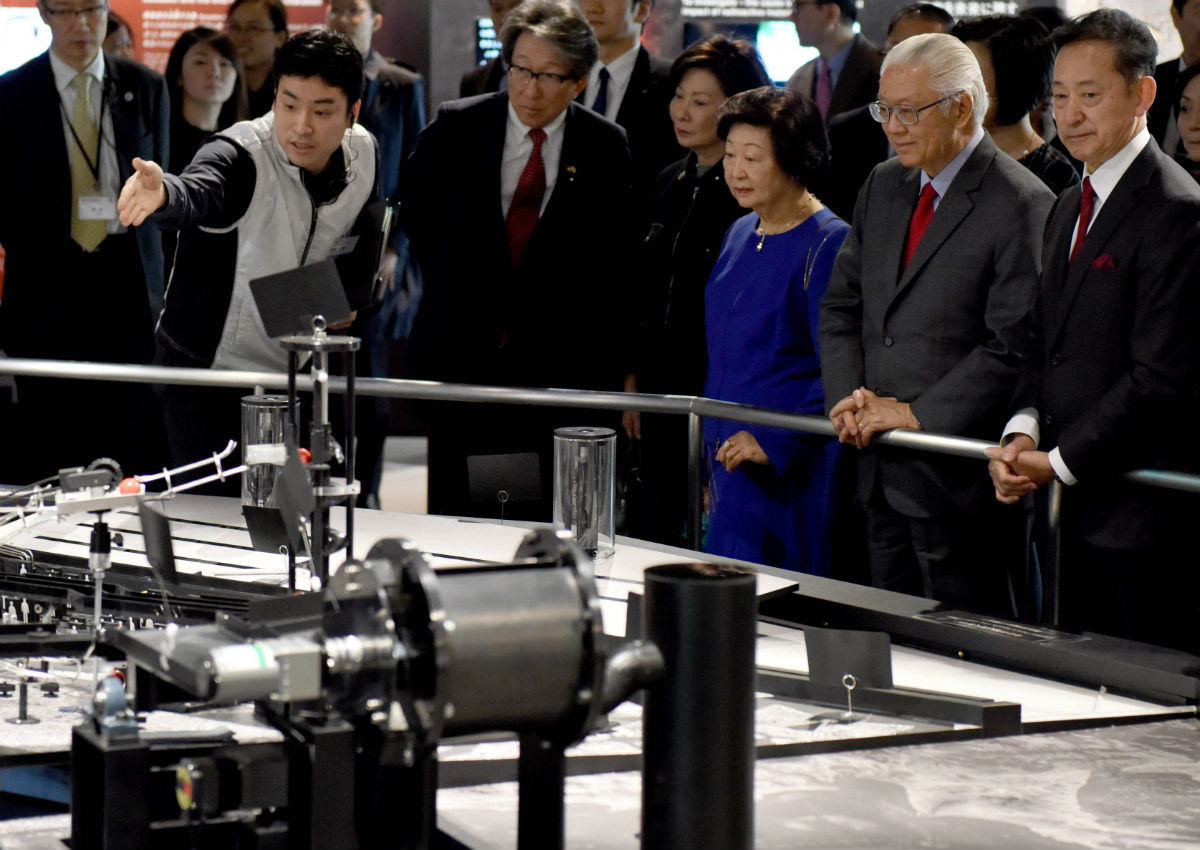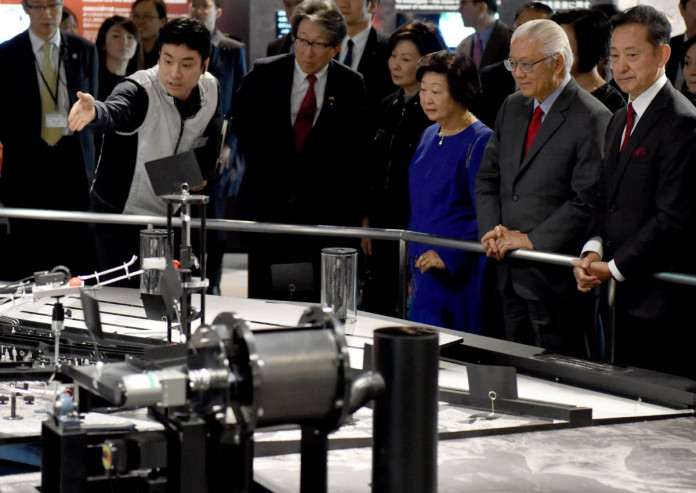Imagine a home that can be programmed to detect viruses and monitor indoor air quality, and be equipped with mirrors that can sense vital signs such as heart rate and blood pressure.
President Tony Tan Keng Yam, who is in Japan for a state visit, had a glimpse of the future at Miraikan – (“Future Museum”) and the Panasonic Centre, which showcases the tech giant’s innovations.
Dr Tan, who is on a nine-day state visit to mark 50 years of bilateral ties between Singapore and Japan, spent an hour each at the Panasonic Centre and Miraikan, also called the National Museum of Emerging Science and Innovation.
At the Panasonic Centre, Dr Tan toured a smart home with a kitchen where a teapot can be filled and water boiled on command, and a refrigerator that offers menu options based on what is inside.
The electronics company has also dreamt up a futuristic marketplace with interactive shop windows that can switch between transparent and image display modes, with smart lockers that can store food deliveries or other packages at specific temperatures.
Dr Tan, whose last visit to the Panasonic Centre was 12 years ago, wrote in a message before he left the showcase yesterday : “It was fascinating to see Panasonic’s vision of how smart technology can be integrated into our daily lives.”
Earlier at the science and innovation museum, which is led by former astronaut Mamoru Mohri, Dr Tan saw a mock-up of an International Space Station module and interacted with humanoid robot Asimo, designed and developed by Japanese firm Honda.
One of the museum’s key exhibits is Mission Survival: 10 Billion – a physical representation of the hazards facing the planet, including natural and man-made disasters.
Another, the Geo-Cosmos spherical globe, projects how Earth looks like from outer space, with almost real-time data of changing weather patterns at a resolution of more than 10 million pixels.
Dr Tan watched a video on water conservation and Singapore’s Newater water purification technology produced by the Singapore Science Centre with students from Nanyang Girls’ High School.
He was also introduced to a group called the Superhuman Sports Society, which aims to develop measures that can help people with disabilities and the elderly lead active lives.
One initiative the group rolled out is a football tournament for those who are blind, using a ball that rattles. It is also experimenting with modifying equipment such as wheelchairs.
One of the group’s members, University of Tokyo professor Masahiko Inami, said: “Japan is an ageing country. With this type of technology, we are trying to establish a new type of industry to assist elderly people and people with disabilities.
“Then, everybody can enjoy playing sports and exercise, and connecting with each other.” Dr Inami also works at the university’s Research Centre for Advanced Science and Technology.
Dr Tan concurred, saying: “I believe this is very useful for Singapore which is ageing, to help old people to walk and to get around.”

This article was first published on November 30, 2016.
Get a copy of The Straits Times or go to straitstimes.com for more stories.






